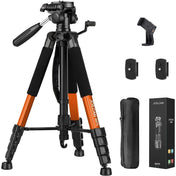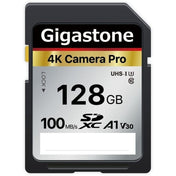In recent years, mirrorless cameras have gained immense popularity among photography enthusiasts and professionals alike. With their incredible capabilities, compact size, and versatility, they have made their mark in the world of digital photography. Whether you’re a seasoned pro or just starting out, understanding the ins and outs of these innovative cameras can elevate your photography skills.
What are Mirrorless Cameras?
Unlike traditional DSLRs that use a mirror mechanism to reflect light into an optical viewfinder, mirrorless cameras operate without this complex system. This fundamental difference leads to several advantages which we will explore throughout this article.
Key Advantages of Mirrorless Cameras
- Compact and Lightweight: Mirrorless cameras are typically smaller and lighter than their DSLR counterparts.
- Faster Autofocus: Many mirrorless models offer faster and more accurate autofocus capabilities, enhancing your shooting experience.
- Live View: With an electronic viewfinder (EVF) or live view mode, you can see exactly how your image will look before you shoot.
- Interchangeable Lenses: Similar to DSLRs, mirrorless cameras allow you to change lenses, providing flexibility for different shooting scenarios.
Understanding the Different Types of Mirrorless Cameras
Within the realm of mirrorless cameras, there are various types tailored to different needs and styles. Let’s break them down:
1. Compact Mirrorless Cameras
Compact mirrorless cameras are designed for portability. They are ideal for casual photographers or travelers who prioritize convenience.
2. Professional Mirrorless Cameras
These are designed with advanced features and high-performance capabilities, catering to professionals that demand quality in all aspects of photography.
3. Hybrid Mirrorless Cameras
Hybrid models often blend features from both compact and professional cameras, offering versatility and high performance without overwhelming complexity.
Choosing the Right Mirrorless Camera for You
Selecting the perfect mirrorless camera can seem daunting with the vast array of options available. Here are some factors to consider:
1. Purpose
Identify your primary reason for purchasing a camera. Are you planning to shoot landscapes, portraits, or sports? Understanding your needs will guide your choice.
2. Budget
Set a budget that allows you to balance quality and performance. There are impressive options across all price ranges.
3. Features
Look for important features that cater to your photography style. For instance, if video recording is essential, ensure the camera supports 4K video quality.
Mirrorless Cameras vs. DSLRs: The Great Debate
The ongoing debate between mirrorless cameras and DSLRs is fueled by the unique strengths of each system. Here’s a comparison:
Image Quality
Both types can deliver exceptional image quality, but mirrorless cameras often have the edge in low-light conditions due to their advanced sensors.
Battery Life
DSLRs typically boast longer battery life due to their optical viewfinders, whereas mirrorless cameras, relying on electronic displays, consume more power.
Lens Selection
Over time, DSLRs have a more extensive collection of lenses, but the gap in lens options for mirrorless cameras is rapidly closing.
Exploring Uses and Applications of Mirrorless Cameras
Mirrorless cameras are incredibly versatile and can be used in various photographic genres. Let’s explore a few applications:
1. Travel Photography
The compact size of mirrorless cameras makes them perfect for travel, allowing photographers to capture rich experiences without lugging heavy gear.
2. Wildlife Photography
Fast autofocus and excellent burst shooting capabilities make mirrorless cameras an excellent choice for wildlife photography, where timing is everything.
3. Street Photography
Its discreet design enables street photographers to capture spontaneous moments without drawing attention.
4. Underwater Photography
If you’re an adventurous soul, pairing your mirrorless camera with underwater housing opens a world of stunning underwater photography. For instance, incorporating something like the Olympus Tough TG-6 enhances your chances of capturing vibrant marine life.
Tips for Getting Started with Your Mirrorless Camera
Now that you’re excited about mirrorless cameras, here are some useful tips to kickstart your photography journey:
1. Understand Camera Settings
Take the time to familiarize yourself with your camera’s settings. Knowing how to adjust aperture, shutter speed, and ISO is crucial for great shots.
2. Invest in Quality Lenses
Quality lenses can vastly improve your photography. Consider different types of lenses for various scenarios, from wide-angle for landscapes to macro for close-up shots.
3. Practice Regularly
Regular practice is key. Experiment with different settings, subjects, and environments to discover your unique style.
4. Join Photography Communities
Engaging with photography communities, either online or in person, can provide valuable insights and techniques from fellow enthusiasts.
Maintenance and Care of Your Mirrorless Camera
Maintaining your mirrorless camera ensures it performs optimally. Here are some essential care tips:
1. Clean Your Lens
Regularly clean your lenses with a microfiber cloth to keep your images sharp and clear.
2. Protect Your Camera
Use a camera bag or case to protect against physical damage and environmental factors. Consider weather-sealed options if you often shoot outdoors.
3. Regular Firmware Updates
Stay updated with your camera’s firmware by regularly checking for updates. These updates can provide enhancements and fix known bugs.
Leveraging Accessories to Enhance Your Experience
Accessories can dramatically expand the capabilities of your mirrorless camera. Consider investing in:
- Tripods: Ideal for low-light photography and long exposures.
- External Flashes: For better lighting in portraits and low-light situations.
- Filters: Enhance your images with polarizing or ND filters.
- Camera Straps: A comfortable strap ensures easy carrying during long shoots.
Staying Inspired: Where to Find Creative Ideas
Finding inspiration can often be a challenge. Here are some resources that can spark your creativity:
1. Online Platforms
Websites like Instagram and Pinterest are fantastic for exploring ideas and seeing the work of fellow photographers.
2. Photography Books and Magazines
Invest in photography books and magazines that showcase various styles and techniques to inspire your own work!
3. Take a Class
Consider enrolling in photography courses, either online or in-person, to hone your skills and keep you inspired.
Your Journey Awaits!
As you venture into the world of mirrorless cameras, remember that each click is a step toward mastering this art. With every new technique you learn and each photo you take, your comfort and confidence with your camera will grow. Dive into shoots, experiment with settings, and let your creativity flow. Don’t forget to explore the beauty around you and capture the stories that unfold in each moment.
Ultimately, photography is about enjoying the process, and with the right tools and mindset, you can unlock limitless possibilities. Embrace the adventure that comes with exploring mirrorless cameras and watch as your photography skills reach new heights!











